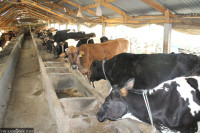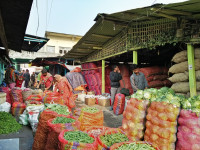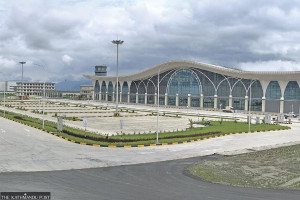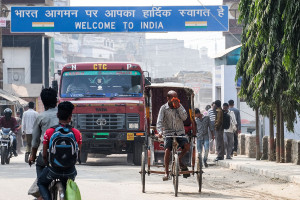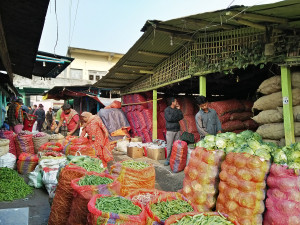Money
Data show inflation easing but people don’t feel it
According to Nepal Rastra Bank, the year-on-year consumer price inflation moderated to 4.95 percent in the mid-November to mid-December period.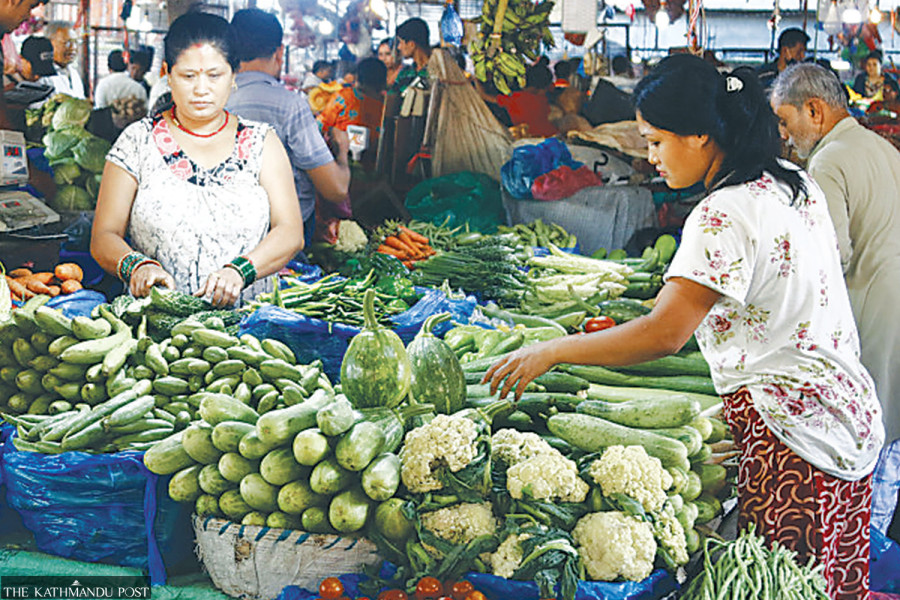
Post Report
Nepal’s inflation rate fell to 4.95 percent in mid-December in what is a larger drop than economists had anticipated.
According to Nepal Rastra Bank, the country’s central bank, the year-on-year consumer price inflation moderated to 4.95 percent in the mid-November to mid-December period, down from 7.38 percent a year ago.
The country’s consumer inflation has started to decline since last month, which according to the central bank is due to a drop in food prices.
Inflation stood at 5.10 percent in the food and beverage category, and 4.84 percent in non-food and service category in the review month.
“The ongoing drop in inflation is not what we had anticipated,” said economist Gobinda Nepal. “Observing the market, the inflation might be around 6.5 percent currently.”
The drop is reflected in the price of vegetables, which now cost significantly less than what they used to just a few months ago, but the prices of rice, lentils, legumes and edible oil are still high, Nepal said.
“Despite the drop, consumers are not feeling the relief,” said Nepal.
The central bank calculates average inflation by keeping 400 goods under the same basket, which also includes many goods that are not mostly consumed. “As a result, the average prices are seen low,” he said.
The central bank should instead calculate inflation by listing daily essential consumable goods so that it reflects the market inflation reality, said economists.
People are suffering due to the rising cost of living but the national data reflects the opposite situation, which dampens the reliability of the central bank’s statistics, Nepal said.
“The methodology that the central bank adopts to calculate the inflation rate is now under question,” Nepal said.
Prices have increased with India imposing export restrictions on rice, wheat, sugar and onion and Nepal imposing VAT on imported potatoes, onions and other vegetables.
According to the central bank figure, the year-on-year prices of ghee and oil, vegetables, meat and fish coupled with two downward adjustments of petroleum product prices contributed to the subdued inflationary pressure in the review month.
Under the food and beverage category, the price index of ghee and oil decreased by 13.66 percent, vegetables by 8.37 percent, and meat and fish by 0.13 percent in the review month.
The price index of spices sub-category increased by 37.22 percent, fruit category increased by 13.37 percent, sugar and sugar products by 13.24 percent, cereal grains and their products by 11.30 percent, milk products and eggs by 10.59 percent, and pulses and legumes 10.56 percent.
Similarly, under the non-food and services category, the price index of transportation decreased by 2.48 percent in the review month.
The price index of the recreation and culture subcategory increased by 12.84 percent, miscellaneous goods and services increased by 11.03 percent, education by 8.92 percent, furnishing and household equipment by 5.24 percent and clothes and footwear by 4.96 percent.
According to Nepal Oil Corporation, prices of petrol and diesel/kerosene declined by Rs3 per litre each to Rs170 per litre and Rs157 per litre, respectively, in mid-December.
The price of liquefied petroleum gas (LPG) and aviation fuel sold for domestic and international airlines has not declined in the past three months.
Economists said that consumer spending has declined as slow economic growth led to job losses and layoffs, creating demand compression.
The subdued demand impacted the prices, resulting in the drop in inflation.The government has targeted to cap the inflation rate at 6.5 percent this fiscal year.



 9.12°C Kathmandu
9.12°C Kathmandu

